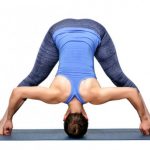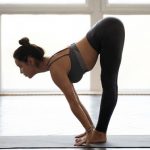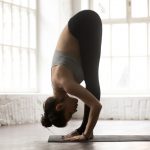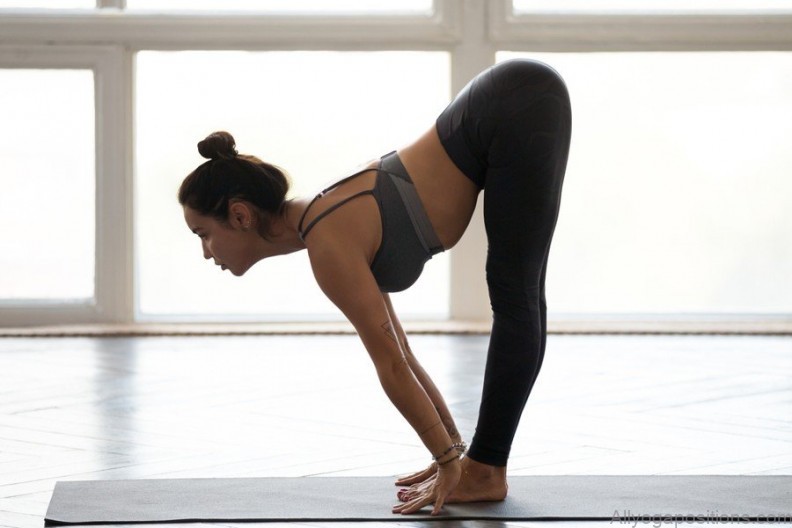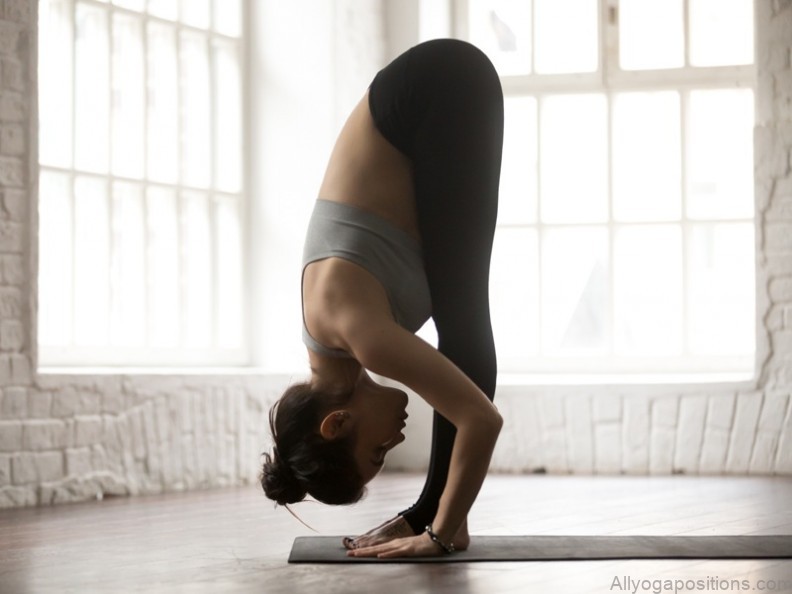Are you looking for an advanced yoga pose that challenges your flexibility and strength? Look no further than the Standing Foot Behind the Head Forward Bend Pose, also known as Eka Pada Sirsasana. This impressive pose is a combination of balance, strength, and flexibility, and is sure to impress anyone who sees you in it. However, this pose is not for beginners, and requires a lot of practice and patience to master. In this article, we will explore the benefits, precautions, and step-by-step guide to practice the Standing Foot Behind the Head Forward Bend Pose.
What is the Standing Foot Behind the Head Forward Bend Pose?
The Standing Foot Behind the Head Forward Bend Pose is a standing forward bend that involves placing one foot behind the head while standing on the other leg. This pose is an advanced variation of the traditional Standing Forward Bend Pose (Uttanasana) and requires a high level of flexibility and strength. The pose requires a deep stretch in the hamstrings, hips, and groin, while also requiring balance and stability.
Mastering the Standing Foot Behind the Head Forward Bend Yoga Pose Photo Gallery
Preparing for the Pose: Warm-Up Exercises
Before attempting the Standing Foot Behind the Head Forward Bend Pose, it is essential to prepare your body with some warm-up exercises. Some useful warm-up exercises for this pose include:
- Standing Forward Bend (Uttanasana): This pose helps to stretch the hamstrings, hips, and spine, which are crucial for the Standing Foot Behind the Head Forward Bend Pose.
- Pigeon Pose (Eka Pada Rajakapotasana): This pose is excellent for opening up the hips and preparing them for the deep stretch required in the Standing Foot Behind the Head Forward Bend Pose.
- Reclining Hand-to-Big-Toe Pose (Supta Padangusthasana): This pose helps to stretch the hamstrings and prepares the legs for the intense stretch required in the Standing Foot Behind the Head Forward Bend Pose.
Step-by-Step Guide to Practice the Pose
- Begin in Tadasana (Mountain Pose) at the top of your mat. Take a deep breath and center yourself.
- Exhale and fold forward into Uttanasana (Standing Forward Bend). Place your hands on the ground, palms down.
- Lift your right leg up and place your right foot behind your head. You may need to use your hands to guide your foot into place.
- Once your right foot is securely behind your head, start to straighten your left leg.
- Hold the pose for a few breaths, then release and repeat on the other side.
Benefits of Standing Foot Behind the Head Forward Bend Pose
The Standing Foot Behind the Head Forward Bend Pose has several benefits, including:
- Improves flexibility: This pose requires a deep stretch in the hamstrings, hips, and groin, which can help to improve your overall flexibility.
- Strengthens the legs: This pose requires a lot of strength in the standing leg, which can help to strengthen the legs over time.
- Improves balance and focus: This pose requires a lot of balance and focus, which can help to improve your overall sense of balance and focus.
- Relieves stress and anxiety: This pose can help to relieve stress and anxiety by calming the mind and releasing tension.
-
Benefits of Standing Foot Behind the Head Forward Bend
-
Practicing Standing Foot Behind the Head Forward Bend offers numerous physical and mental benefits. Some of them are:
4.1 Improves flexibility
This asana is one of the best stretches for the lower body, including the hips, hamstrings, and groin. Regular practice of this pose can significantly improve the flexibility of the legs and hips, making it easier to perform other yoga poses.
4.2 Strengthens the core muscles
Standing Foot Behind the Head Forward Bend requires balance and stability, which engages the core muscles, including the abs and back muscles. With regular practice, these muscles can become stronger, improving posture and reducing the risk of lower back pain.
4.3 Stimulates the abdominal organs
The compression of the abdominal region in this pose can stimulate the digestive organs, improving digestion and metabolism. It can also help in releasing tension from the abdominal area.
4.4 Calms the mind
This asana requires focus and concentration, which can help in calming the mind and reducing stress and anxiety. The deep breathing involved in this pose can also help in relaxing the mind and body.
- Precautions and Contraindications
While Standing Foot Behind the Head Forward Bend offers many benefits, it is essential to practice it with caution and avoid it if you have any medical conditions that may be aggravated by this pose. Here are some precautions and contraindications to keep in mind:
5.1 Avoid if you have hip, knee or ankle injury
If you have any injuries to the hips, knees or ankles, it is best to avoid this pose. Attempting this pose with an injury can worsen the injury and delay the healing process.
5.2 Avoid if you have lower back pain
If you have lower back pain, this pose can put additional strain on your lower back, aggravating the pain. It is best to avoid this pose or perform it under the guidance of a yoga teacher.
5.3 Practice with caution if you have high blood pressure or heart conditions
If you have high blood pressure or heart conditions, it is essential to practice this pose with caution. The inversion in this pose can increase blood pressure, and it is best to avoid this pose or perform it under the guidance of a yoga teacher.
5.4 Avoid during pregnancy
This pose is not recommended during pregnancy as it can put pressure on the abdomen and may cause discomfort.
Conclusion:
Standing Foot Behind the Head Forward Bend Yoga Pose is a challenging yet highly rewarding pose that offers numerous physical and mental benefits. Practicing this pose regularly can improve flexibility, strengthen core muscles, stimulate abdominal organs, and calm the mind. However, it is essential to practice it with caution and avoid it if you have any medical conditions that may be aggravated by this pose. If you are new to this pose, it is best to perform it under the guidance of a qualified yoga teacher to avoid any injuries. With regular practice, you can gradually improve your flexibility and balance, making this pose more accessible and enjoyable.
Table of Contents
Maybe You Like Them Too
- Mastering Virabhadrasana A: The Warrior Pose of Empowerment
- Embracing the Essence of Wide Legged Forward Bend: A Deep Dive
- Unlocking the Power of Prasarita Padottanasana: The Wide-Legged Forward Bend
- The Power and Elegance of the Wide Legged Forward Bend II Yoga Pose
- Mastering the Warrior II Pose: A Deep Dive into Its Benefits and Techniques


